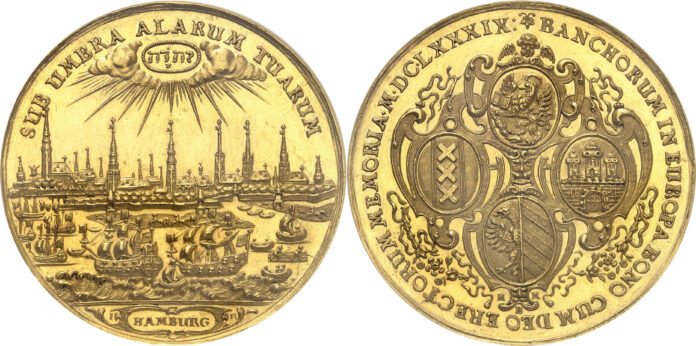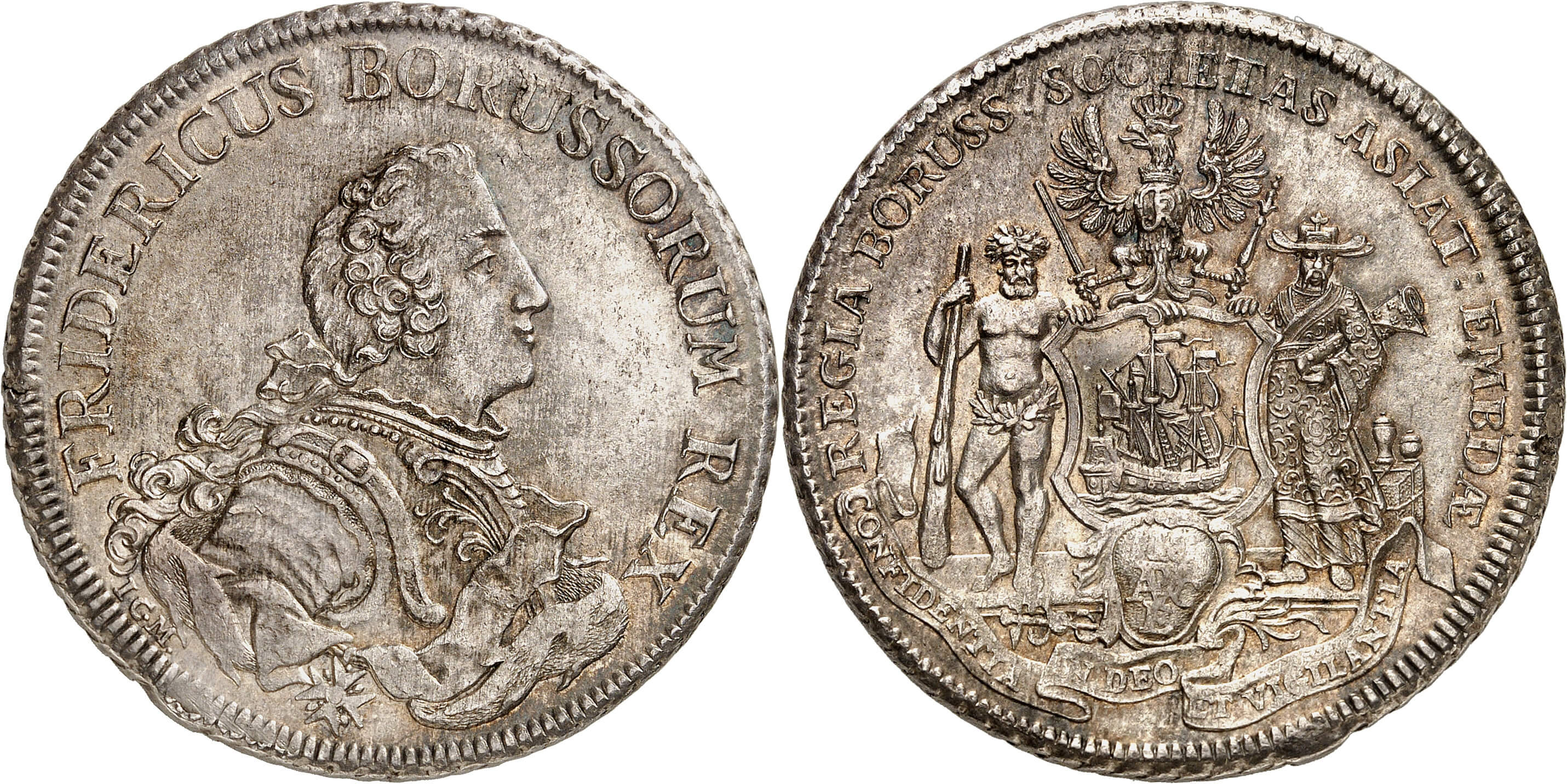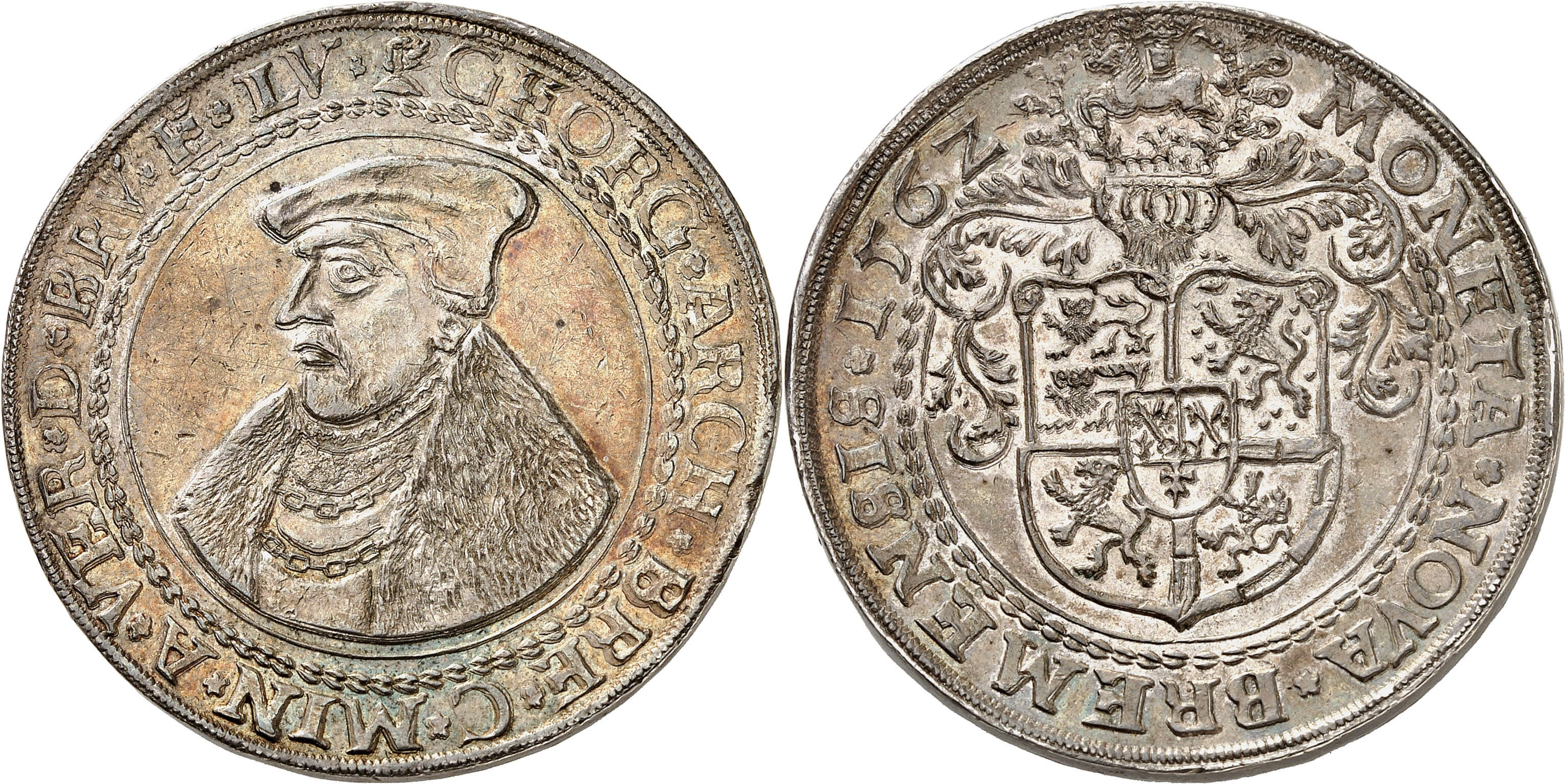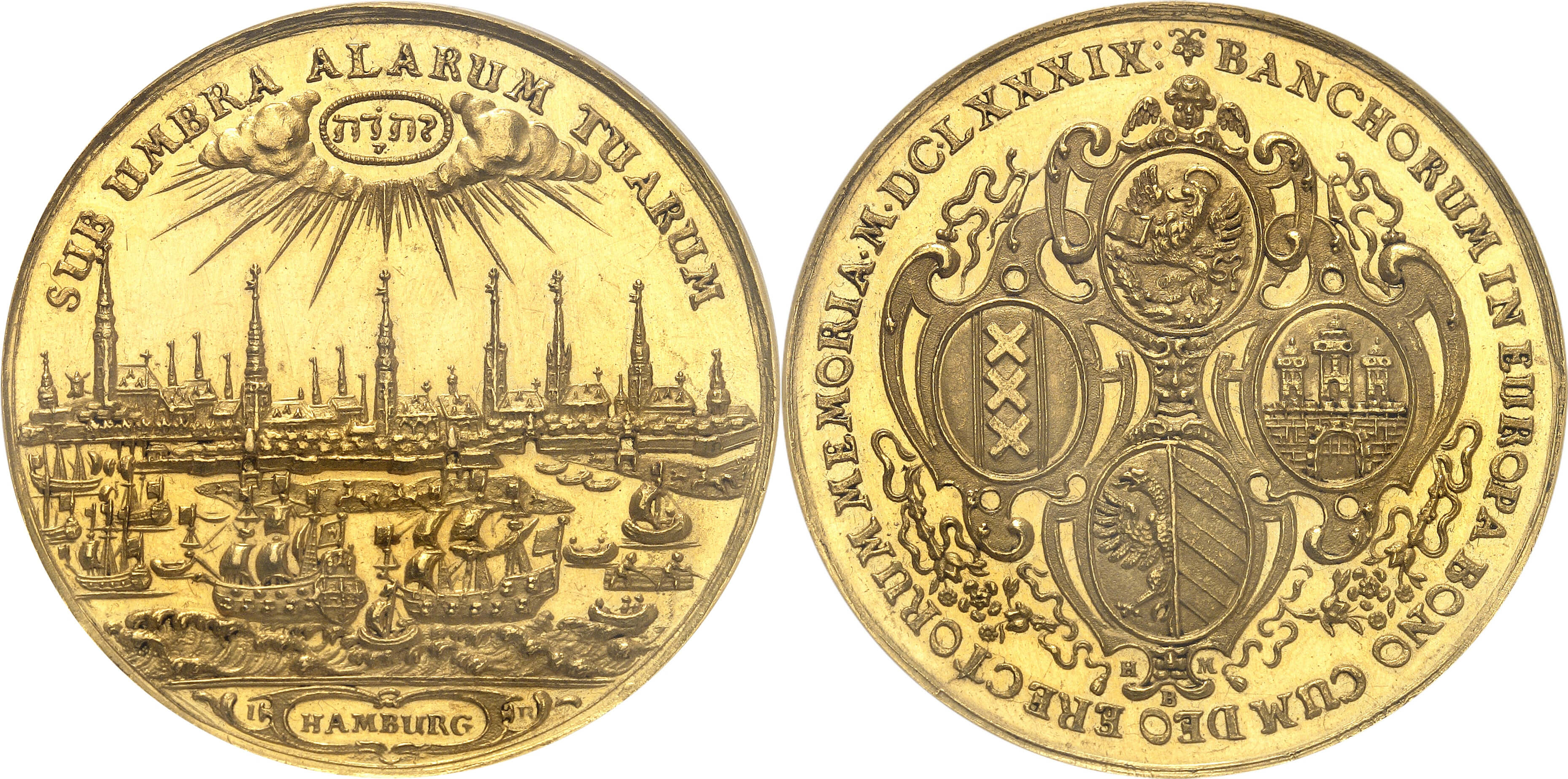Künker’s Rarities for the World Money Fair
Auction house Künker from Osnabrück will offer 1,077 lots with world coins and medals in Berlin on 30 January 2020 before the begin of the World Money Fair. The day starts with the Prof Dr Rudolf Wiechert Collection o. a. featuring rarities from Brandenburg-Prussia. Coins and medals of the German States comprising a wealth of rarities of outstanding quality come next. There are also numerous interesting pieces from the Holy Roman Empire on offer, many of them struck at the mints of Prague and Graz. The next section comprises world coins. Connoisseurs can look forward to some special surprises in this category, for example, a series of the popular 5 guineas from Great Britain. A selection of orders and decorations rounds off the offer.
The Prof Dr Rudolf Wiechert Collection o. a. Including Coins from Brandenburg-Prussia
The Berlin auction starts with 139 selected gold and silver coins of the Hohenzollerns. They stem from the collection of well-known chemist Prof Dr Rudolf Wiechert o. a. and have one thing in common: All of them are of exceptional quality. They cover the period from George William (1619–1640) to Frederick William III, under whose reign the Kingdom of Prussia merged into the German Empire in 1871. Even though there are numerous interesting pieces of all kings, the collection focuses on gold coins and – regarding the time of minting – on the coins of soldier king Frederick William and those of his son Frederick II.
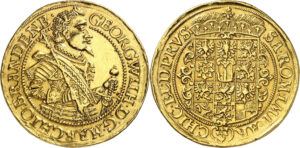
At this point, we will only mention two of the many pieces: the lot of this section with the highest estimate of 75,000 euros – a quintuple ducat of George William I minted in 1627 in Königsberg – and an unpublished gold medal designed by J. Höhn glorifying Prussia supporting Sweden in its fight against Poland in the Battle of Warsaw in 1656.
Several Guinea ducats and two silver coins of Frederick II minted for the trade bear witness to the efforts of the Prussian kings to increase the income of their empire.
German States
From No. 140, a ducat of 1744 from Anhalt-Bernburg, to No. 614, an off-metal strike in gold of a bread token of 1816/8 from the Wuppertal district Elberfeld: Those interested in coins of the German States in outstanding quality will find what they are looking for at this auction. And those who would like to have a bit of history as a bonus will find an abundance of interesting pieces.
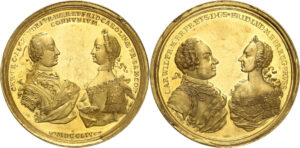
For example, let us take a look at a medal from Brandenburg in Franconia: In 1754, Charles William Frederick had a medal of 40 ducats struck on the occasion of the wedding of his son Christian Frederick Alexander and Frederica Caroline of Saxe-Coburg-Saalfeld. This marriage was – as many others that were concluded for political reasons – rather unhappy. However, the consequence the husband drew after the death of his wife was rather unusual. Although the marriage had been childless, he did not marry again within his social class to conceive an heir to the throne. No, he ceded his rule to Prussia in exchange for a significant life annuity and enjoyed his remaining years with his lover in England.
Coins of the Holy Roman Empire
Another highlight of the auction are almost 90 lots of coins and medals of the Holy Roman Empire. From a rare bracteate of Ottokar II of Bohemia featuring an elephant to pieces of Emperor Franz Joseph – this series offers an abundance of interesting lots. Collectors from the Czech Republic and Styria will be particularly delighted because this series contains numerous coins made in the mints of Prague and Graz.
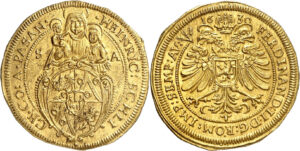
But there are also some spectacular pieces of the Mediatized Houses. And at this point we are not thinking of the relatively frequently seen Salzburg gold multiples, but of coins of the noble families of the Dietrichstein, the Eggenbergs, the Esterházys, the Lobkowiczs, the Paars, the Windisch-Graetzs and, of course, the counts of Schlik (Slikové).
The section Holy Roman Empire ends with an interesting series of Vienna “Salvator” medals.
World Coins
The section World Coins and Medals only comprises less than 300 lots, but all of them are extremely interesting. Experts will find rarities from many countries, pieces that simply are not commonplace. Especially among the French lots there are outstanding pieces, for example, an early silver medal minted under Charles VII commemorating the expulsion of the English from France in 1455.
The small series of 5 Guineas comprising pieces of James II to George II is likely to arouse great interest as well.
Whatever you are collecting, a glance at the offer is definitely worth it – even merely for the joy of seeing so many rarities in outstanding condition.
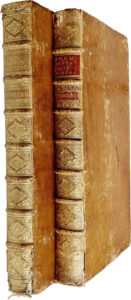
Numismatic Literature
If you like to live with books, this auction provides you with the opportunity of purchasing some rare new flatmates. Auction 331 comprises three bibliophile treasures, among them is the second volume of an extraordinary work that is not only connected to the Habsburgs but also to the Black Forest.
Father Marquard Herrgott, who lived at the imperial Court of Vienna as diplomatic representative of the Estates of Breisgau, published a four-volume work, which, for the first time ever, systematically recorded the seals, coins, pictures and funeral monuments connected to the House of Habsburg. At the time it was published, Emperor Charles VI was so amazed by it that he appointed the author imperial historiographer.
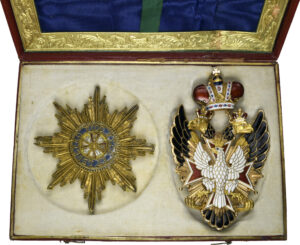
Orders and Decorations
Auction 331 ends with 25 outstanding orders and decorations. There are rarities from the Grand Duchy of Baden, Russia and Sweden.
All catalogues can be ordered at Künker, Nobbenburger Straße 4a, 49076 Osnabrück; phone: +49 541 / 96 202 0; fax: +49 541 / 96 202 22; or via email.
You can also access the auction catalogue online.
The viewing will take place from 2 to 25 January 2020 – only by prior appointment – in Osnabrück.
On the following days, the coins can be viewed at the Estrel Hotel, Berlin:
Tuesday, 28 January 2020: 3 pm to 6 pm,
Wednesday, 29 January 2020: 10 am to 6 pm,
Thursday, 30 January 2020: 10 am to 6 pm.
On 5 and 6 February 2020, an eLive Premium Auction will be held. It covers the following areas:
- Rarities from the Friedrich Popken Collection
- The Taler treasure of Betzenstein
- Special collection from the House of Habsburg
- Medals from all over the world
A separate preview will be published for this eLive Premium Auction.
The lots of this auction sale can be viewed at the Estrel Hotel, Berlin, on the following days, too:
Tuesday, 28 January 2020: 3 pm to 6 pm,
Wednesday, 29 January 2020: 10 am to 6 pm,
Thursday, 30 January 2020: 10 am to 6 pm.



